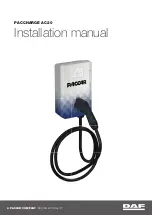
Further related subjects:
R
Notes on tire pressure (
→
page 363)
R
Tire pressure table (
→
page 364)
R
Tire and Loading Information placard
(
→
page 369)
Tire pressure monitoring system
Function of the tire pressure monitoring sys‐
tem
&
DANGER Risk of accident due to incor‐
rect tire pressure
Every tire, including the spare (if provided),
should be checked when cold at least once a
month and inflated to the pressure recom‐
mended by the vehicle manufacturer (see
Tire and Loading Information placard on the
B-pillar on the driver’s side or the tire pres‐
sure label on the inside of the fuel filler flap
of your vehicle). If your vehicle has tires of a
different size than the size indicated on the
Tire and Loading Information placard or the
tire pressure table, you need to determine
the proper tire pressure for those tires.
As an added safety feature, your vehicle has
been equipped with a tire pressure monitor‐
ing system (TPMS) that illuminates a low tire
pressure indicator lamp when one or more of
your tires are significantly underinflated.
Accordingly, if the low tire pressure indicator
lamp lights up, you should stop and check
your tires as soon as possible, and inflate
them to the proper pressure. Driving on a
significantly underinflated tire causes the tire
to overheat and can lead to tire failure.
Underinflation also increases fuel consump‐
tion and reduces tire tread life, and may
affect the vehicle's handling and braking abil‐
ity. Please note that the TPMS is not a substi‐
tute for proper tire maintenance, and it is the
driver's responsibility to maintain correct tire
pressure, even if underinflation has not
reached the level to trigger illumination of
the TPMS low tire pressure indicator lamp.
Your vehicle has also been equipped with a
TPMS malfunction indicator to indicate when
the system is not operating properly. The
TPMS malfunction indicator is combined with
the low tire pressure indicator lamp. When
the system detects a malfunction, the indica‐
tor lamp will flash for approximately a minute
and then remain continuously illuminated.
This sequence will continue upon subsequent
vehicle start-ups as long as the malfunction
exists.
When the malfunction indicator is illumina‐
ted, the system may not be able to detect or
signal low tire pressure as intended. TPMS
malfunctions may occur for a variety of rea‐
sons, including the installation of incompati‐
ble replacement or alternate tires or wheels
on the vehicle that prevent the TPMS from
functioning properly.
Always check the TPMS malfunction warning
lamp after replacing one or more tires or
wheels on your vehicle to ensure that the
replacement or alternate tires and wheels
allow the TPMS to continue to function prop‐
erly.
366 Wheels and tires
Summary of Contents for S-Class Coupe 2018
Page 7: ......
Page 8: ...6 At a glance Cockpit...
Page 10: ...Night View Assist 197 Head up Display 214 214 Seat belt extender 38 8 At a glance Cockpit...
Page 11: ......
Page 12: ...Instrument Display in the Widescreen Cockpit 10 At a glance Warning and indicator lamps...
Page 14: ...12 At a glance Overhead control panel...
Page 16: ...14 At a glance Door control panel and seat adjustment...
Page 18: ...16 At a glance Control settings in the rear compartment...
Page 20: ...18 At a glance Emergencies and breakdowns...
Page 404: ...Roof load Maximum roof load S 560 0 lb 0 kg 402 Technical data...
Page 502: ......
















































